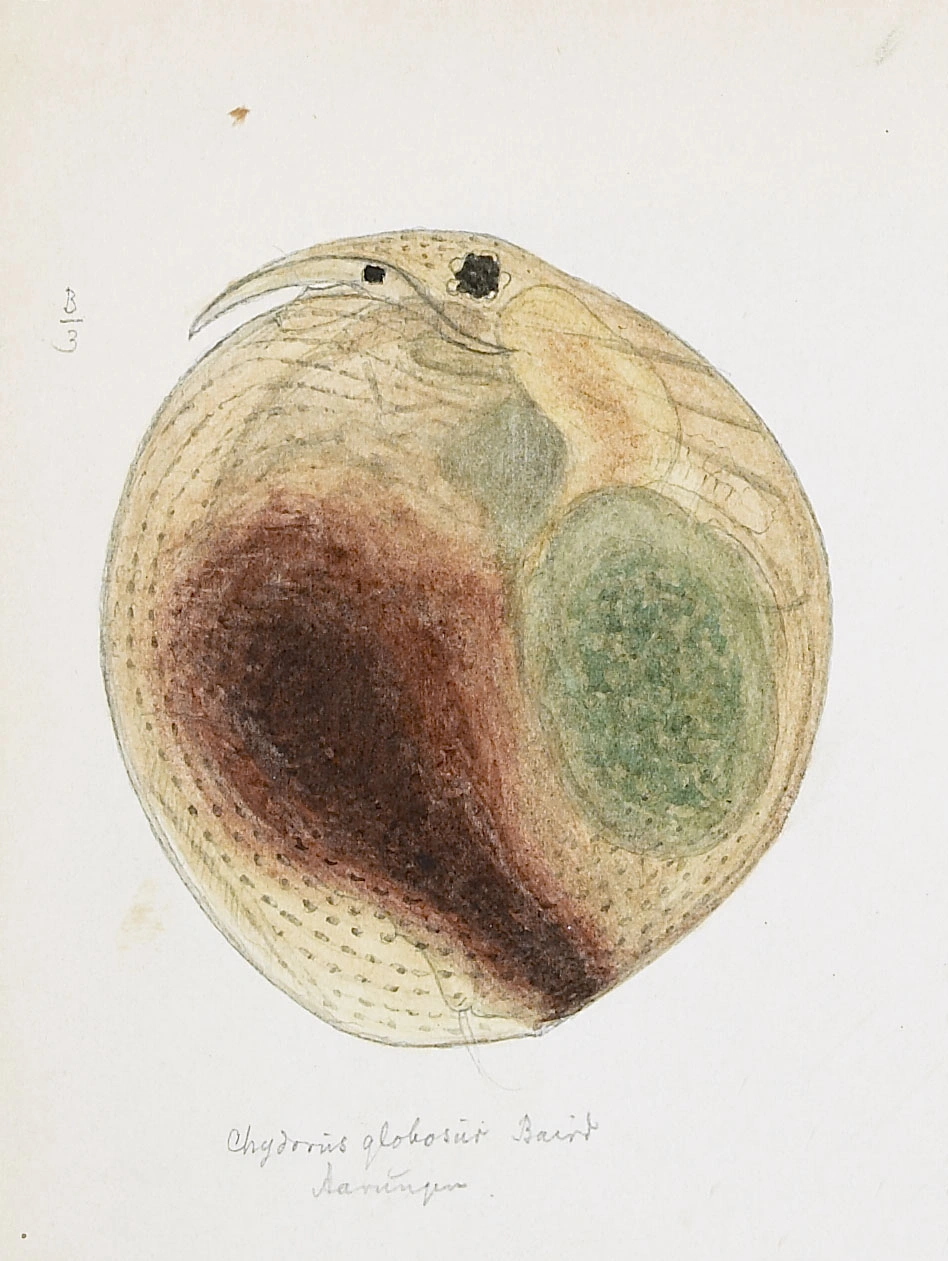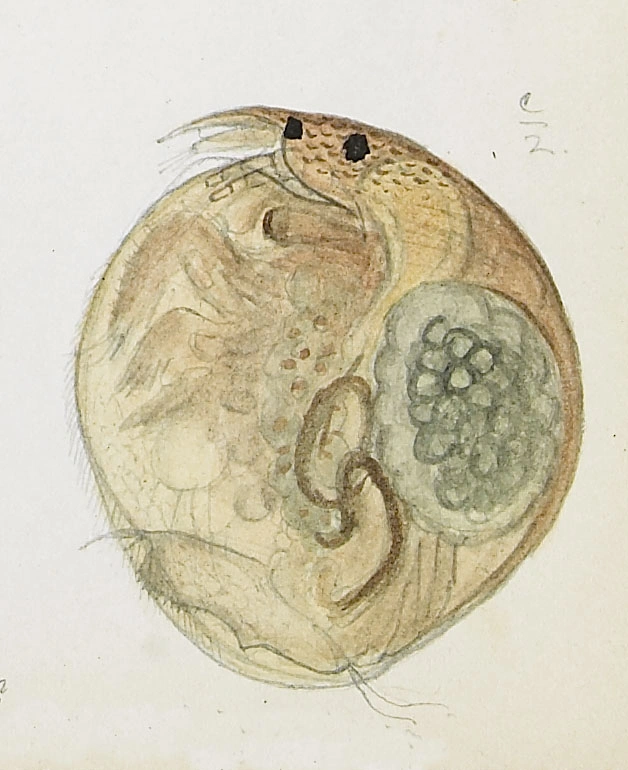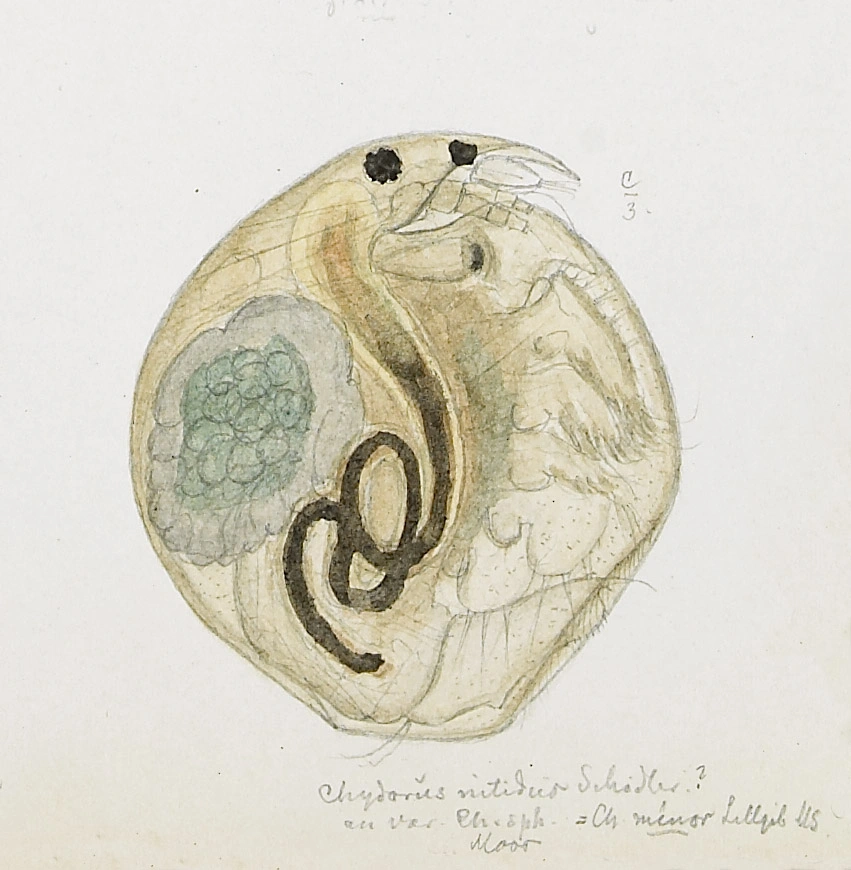Pseudochydorus globosus
Pseudochydorus globosus has a characteristic dark, transverse band across the circular carapace, from where the long and narrow postabdomen normally protrudes. The species is characterized as moderate acid sensitive.
Key characteristics
Pseudochydorus globosus (female)
The carapax in Pseudochydorus globosus has a circular form. Its postabdomen, which normally protrudes out of the carapace, is long and narrow with two fairly deep incurvatures on the dorsal edge. The distal corner has 4–5 quite long teeth. The post abdominal claws are strongly curved having two basal spines, with the distal spine being especially long. The size of the adult females of P. globosus is larger compared to Chydorus spp. It has a characteristic dark, transverse band across the carapace.
Female: Length 0.7–0.9 mm
Male: Length 0.5–0.7 mm
Ecology and distribution
P. globosus is a littoral species recorded from almost 5 % of the localities. The majority of records are from the middle and southeastern parts of Norway while it is more rare in northern Norway and at the west coast. It occurs between 5 and 1055 m a.s.l. with the majority of records from localities situated between 100 and 300 m a.s.l. P. globusus is rare in small water bodies, and occurs with its highest frequency in lakes larger than 1 ha, often in different stands of vegetation. The species is characterized as acid sensitive and is most common when pH >6.0. Conductivity is varying between 0.7 and 53 mS/m.
| Vitenskapelig navn | < 4,5 | 4,5 - 4,9 | 5,0 - 5,4 | 5,5 - 5,9 | 6,0 - 6,4 | 6,5 - 7,0 | 7,0 - 7,4 | > 7,5 |
|---|---|---|---|---|---|---|---|---|
| 1 | 0,9 | 3,8 | 3,6 | 7,7 | 9,9 | 6,6 | 11,9 |
| Vitenskapelig navn | < 1,0 | 1,0 - 1,4 | 1,5 - 1,9 | 2,0 - 2,9 | 3,0 - 3,9 | 4,0 - 4,9 | 5,0 - 6,9 | 7,0 - 9,9 | > 10,0 |
|---|---|---|---|---|---|---|---|---|---|
| 2,2 | 0,8 | 4 | 4,7 | 6 | 9,3 | 11,2 | 13 | 12,8 |
| Vitenskapelig navn | < 0,01 | 0,01 - 0,09 | 0,1 - 0,9 | 1,0 - 9,9 | 10,0 - 99 | 100 - 999 | > 1000 |
|---|---|---|---|---|---|---|---|
| 12,7 | 4,5 | 3,2 | 5,8 | 4,1 | 8,7 | 10,9 |
| Vitenskapelig navn | < 100 | 100-299 | 300-499 | 500-699 | 700-999 | >1000 |
|---|---|---|---|---|---|---|
| 5,4 | 11,9 | 3,1 | 2,1 | 2,2 | 0,4 |
Look-alikes
Chydorus spp




